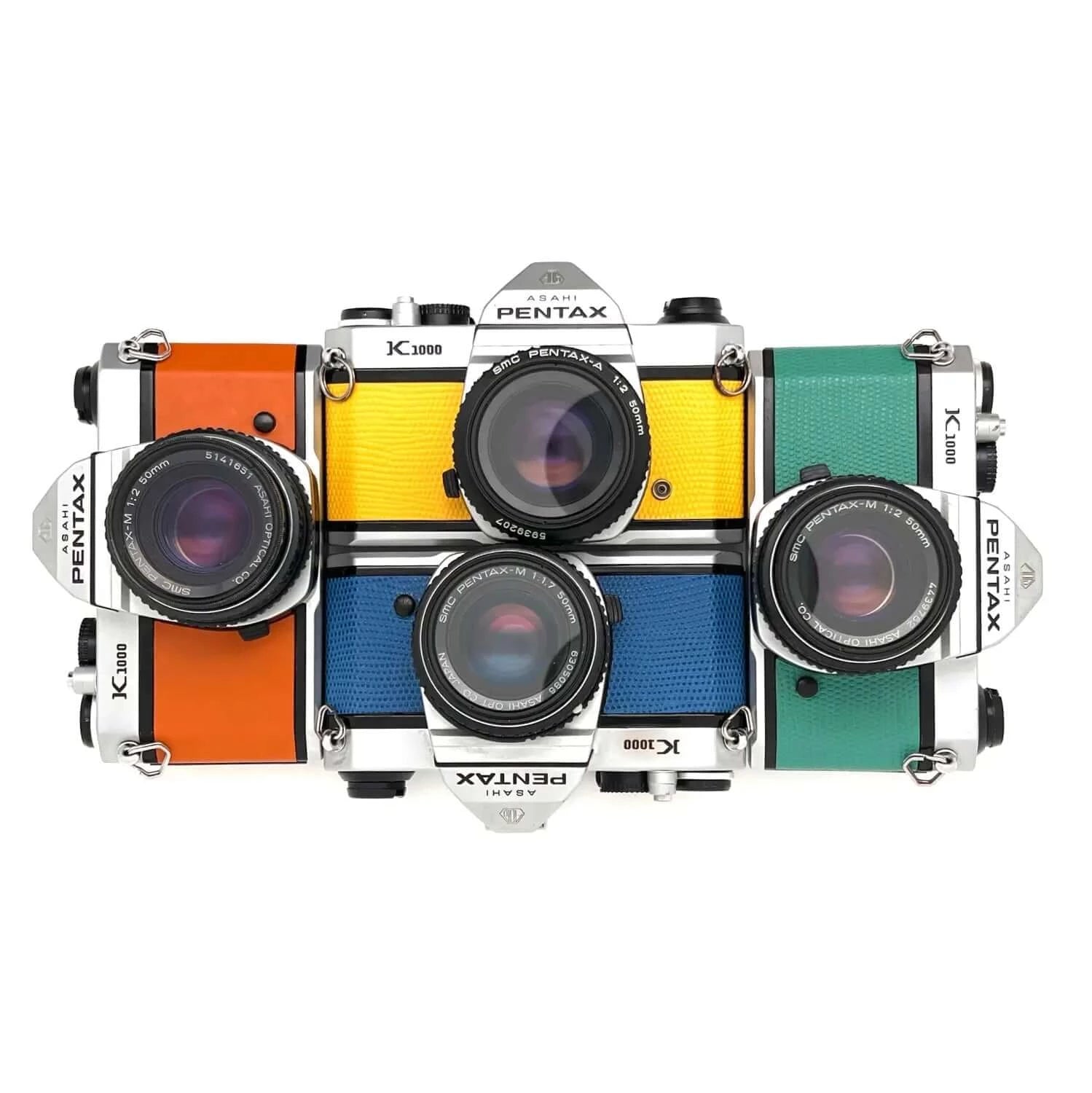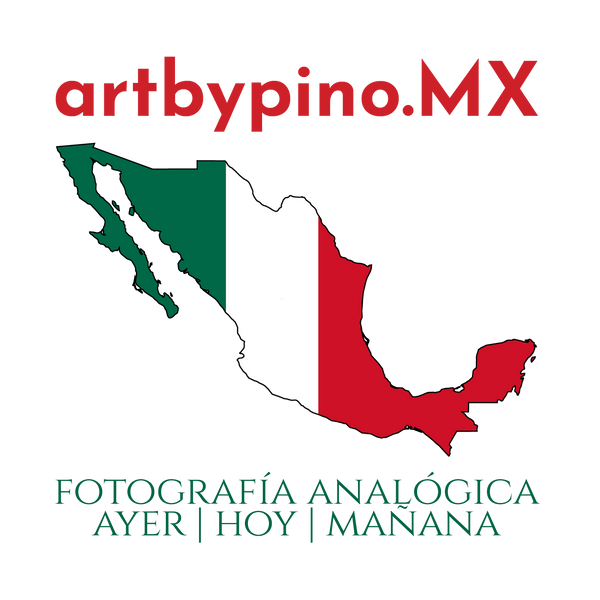Which 35mm or 120 Film Should I buy?
Share
Ever wonder as to “which 35mm or 120 medium format film I should buy?” or “35mm film shop near me” or “where can I buy 35mm or 120 or C41 film?” or “where can I black & white film near me?” or “where can I buy color film?”
Your choices of films are color or Black and White (BW)
For color films, there are two main ways to develop the films. C41 process and E6 process. Most negative color films are C41. The positive or reversal or slide films use the E6 process. Those films are more expensive than the C41 films as they provide excellent colors combined with fine resolution. The E6 processing is also more expensive than C41 processing.
BW films are simpler to process than C41 films and well suited for anyone wanting to develop films at home. The chemistry or chemicals for BW films are less expensive than C41 color films. They also have a longer shelf life and offer infinite combinations to produce different results. What does that mean? You can shoot the same BW film and by developing it in different BW chemistry, you would get different results. With C41 color, the process is to use the same chemistry with little to no variation in the end-results.
There are a handful of BW films that are also of the reversal kind. In the USA, it is hard to find anyone that develops them so, you may need to send them to the UK to develop them.
What the heck is ISO?
ISO - International Standards Organization. Previously, the trend in the USA was to use ASA or American Standards Association. So, many times, in vintage film cameras and manuals, you will see ASA. To keep things simple, remember that ASA = ISO. It refers to the sensitivity of film to light. The lower the number, the brighter the light needs to be. Or, put another way, to shoot in low light, you need a higher ISO (more sensitive to light) film. The film packaging and, typically, the canister or film roll, in the case of 120 medium format films, have the ISO number printed. So, a 50 ISO film requires brighter light than a 400 ISO film.
Recommended films
So here are my recommended films. I have shot all the films that I sell - you can find my pricing here:
Beginner
-
Black and white - Arista 100 or 400 24-36 exp. The same facility in Czechoslavia makes Fomapan whic is the same film but slightly more expensive.
-
Color - Kodak Gold 200 or 400, Color Plus 24-36 exp. Oh, of course, Fuji Superia XTRA 400 or Fuji 200 (as of October 2022, Kodak, USA now makes the Fuji 200 films, the other Fuji films are still made in Japan).
When you are ready for the next step
- Color - Kodak Pro Image 100, Kodak Ektar 100, Portra 160, Portra 400, and, of course, Portra 800, which I find to be the most versatile color film I have ever shot with. I am always happy with the results when I shoot with the Portra 800 in the middle of a sunny day, evening, or indoors. The grain is noticeable, given the higher ISO, but I find it quite pleasing.
-
Black and white - Ilford or Kodak films with 50 ISO to 400 ISO, such as Ilford PanF 50, Ilford Delta 100, Ilford FP4+ 125, Kodak TMAX 100, Ilford Delta 400, Ilford HP5+ 400, Kodak TMAX 400, Kodak TRIX 400. Plan on shooting in low light on 35mm; try the Ilford Ilford Delta 3200 or the Kodak TMAX 3200. And, of course, there are boutique and rebranded films such as those marketed by Adox, Agfa, Bregger, Kosmo, and others.
Disposable Cameras


Having shot with the small variety of disposable film cameras out there, my preferred one is the Kodak 800, which goes by a couple of different names, such as Kodak FunSaver 800 and Kodak Power Flash 800. As long it says 800 in the name, which is for the ISO, you are good. It uses the Portra 800 film stock, which, as I explained above, is the most versatile color film stock in my perception. Fujifilm QuickSnap disposable film cameras are okay if you shoot in good light. Note that they use 400 ISO film as Fuji doesn’t make 800 ISO film as of 06/16/2021.
If you shoot regularly, you are spending more money than necessary if all you shoot with is disposable cameras. And you are getting inferior results when compared to an SLR. Better to buy a quality point & shoot camera and then buy the film separately. Better yet, buy something like a Pentax K1000 which is the most popular film camera in photography schools across the globe. I supply them to photography students after a complete overhaul and with a 30-day warranty.
Disposable cameras are made with the cheapest components that have to last just long enough for you to shoot one roll. The lens is made of cheap plastic, so the optics are okay. The Pentax K1000 is built from metal, and the lens is made from metal and glass. No plastic there. So, your optics are superior, which means superior images.
The Canon AE-1 is a good camera as well. The problem with it is that if the battery dies, the camera cannot be used unlike the Pentax K1000 which only renders the light meter inoperable if the battery dies. You can still take the pictures as the shutter operation is mechanical.
What happens when you take a film photograph?
It immediately starts a chemical reaction when you expose the film to light (through the camera by clicking the shutter). It records a latent image on the plastic or polyester film base coated with chemicals. Store your films in the refrigerator until you are ready to shoot them. After shooting them, refrigerate them and get them developed as soon as possible. The more time elapses since you started the chemical reaction by exposing the film, the more the quality of the latent image degrades. Yes, it is a slow process but for optimum results, have the film developed as soon as possible. So, if you are traveling for a month, send the films in for development when you return home.
How to travel with film
When traveling, always request a hand inspection of your films, as most films do not like X-rays. Even though the scanner at the airport says that films up to 400 ISO are safe, with each incremental scan, the quality of the film (chemicals) is degraded. In the USA, TSA agents are generally knowledgeable and will oblige through a hand inspection. As you travel to places outside the USA, prayer is your only hope that those guarding access to airport terminals will oblige you with a hand inspection. Neither in the USA nor outside the USA will you be able to avoid having the camera and other equipment hand-inspected. So, do not load fresh film before arriving at the airport to board a flight. When returning, shoot through the rest of the film.
The Real Cost of Film Photography
First, note that Film Photography is an expensive hobby. Don’t let anyone tell you otherwise. Beyond the cost of the camera, the real cost is the cost of the film + processing the film. The biggest cost, though, is the cost of the disappointment from cutting corners. Buying cheap cameras that fail. You and your friends were expecting these great vintage-looking shots and get blanks instead. That cost is more than the cost of the film + processing.
So, you are just starting into film photography, let’s take an estimate of costs associated with your new passion:
-
Camera - handed-down, inherited - no cost. Unless it needs light seals or mirror foam replaced. Then, you will incur $15-85. $15 for DIY, cheaply. Go to a hobby store, buy felt and foam, and watch YouTube to DIY. Yay! To have them professionally installed and film-testing your camera after installation costs $85 or more, depending on the model. That is using laser-cut seals made/cut precisely for your camera model and includes the labor-intensive process of removing the old seals and foam completely. The new seals and foam won’t adhere (stick) correctly unless the old seals and mirror foam are completely removed.
Now, you may miraculously find both a film-tested and a camera with replaced light seals and mirror foam online - say, a Pentax K1000 (around $400) or a Canon AE-1 (around $450), or an Olympus OM-2 series ($350-450) with the costs varying based on what lens you get with it. I sell 35mm and 120 medium format film cameras with a 30-day warranty. Available cameras. Remember, if you buy a cheap camera with light leaks or are not sure it works, you are taking a risk with the cost of film (minimum $12 for a color film) and the cost of developing (around $20) per roll. Add to that the cost of disappointment :( -
Cost of the film - you can get basic black and white 35mm rolls for as low as $5-7. These would be like the Arista or Fomapan, with 36 exposures. Of course, you will have the so-called learned folks on Facebook Groups having you believe that those films are of inferior quality or sh*t in their opinion. But, show them an image taken with those film stocks next to one taken with the more expensive film stocks taken with identical camera + lens setup and developed similarly. They would not be able to tell you which is which even if their life depended on it. Seriously. Try it. I have done so on more than one occasion in various Facebook Groups with hilarious outcomes. So, you can follow a YouTube film photography guru and spend your money on a film that costs twice or thrice as much, or you can tell yourself, “I am a newbie to film photography, and a $5-7 film that gives me 36 exposure is an affordable way to trial and error my learning.”
I offer a monthly film subscription service. -
Cost of developing film - call it developing or processing; it all means the same though I use the term processing to include scanning and printing optionally. Your negative has to be treated with chemicals to make the images appear on them so they can be scanned or printed. Your neighbor may do it for $5 a roll or even for free. Take it to CVS, Walgreens, Walmart, or, Target, and they will charge you $20 or so and give you a set of prints and a CD with your scanned images. What about your negatives? They destroy them. Yup. Too costly to return negatives to the store or the Customer due to the logistics and labor involved. And, they take 2-6 weeks. If you can live with that, go for it.
Otherwise, several online outfits do a fine job - The Dark Room is one of the most popular online sites. For $20 (standard resolution), including shipping, negatives are returned along with scans, and a 2-4 week turnaround, is a good deal.
If you are in the RGV, consider my film developing services.
Oh, one more thing. That neighbor that does it for free or $5 is highly unlikely that they have a dedicated film developer and scanner like pro labs do. Chances are that they hand-develop the film. Meaning that there is no consistency from one roll to the next. Colors, contrast, dust, etc., may shift from roll to roll. If you are a newbie learning film photography, you don’t know if your photography is off or the development is off.

